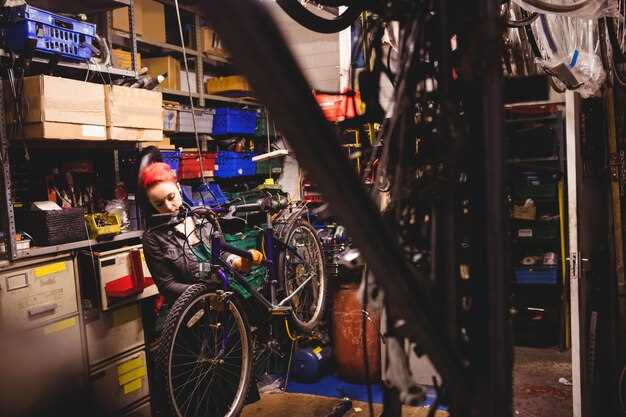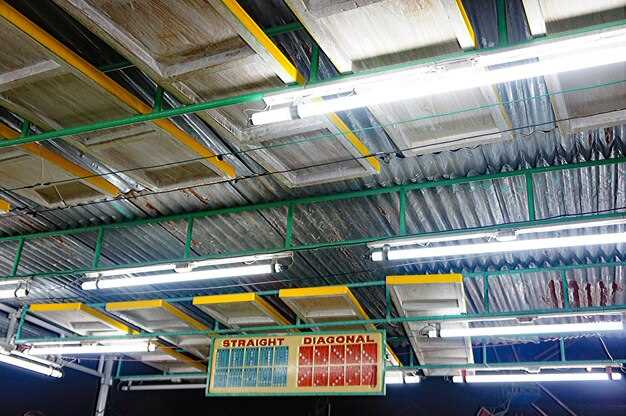
When designing a race shop, the electrical and lighting setup is crucial for achieving optimal performance and safety. A well-planned workshop not only enhances productivity but also ensures that all equipment operates effectively. Proper electrical layouts accommodate the power needs of various racing machines and tools, which can require specialized circuits and outlets.
In a race shop environment, adequate lighting is essential for both workspace visibility and detailed inspections. The right lighting setup minimizes shadows and highlights important areas, allowing technicians to work efficiently. Utilizing a combination of ambient, task, and accent lighting can create a well-lit atmosphere that meets the specific demands of the workshop.
Understanding the load requirements and electrical infrastructure is key to preventing overloads and ensuring safety regulations are met. Careful consideration of circuit capacity, wiring, and placement of outlets can enhance workflow and protect valuable racing equipment from potential electrical issues. By prioritizing these electrical and lighting requirements, race shop owners can establish an efficient and reliable workshop environment.
Power Distribution and Circuit Design for High-Performance Tools

Effective power distribution is crucial for race shops that utilize high-performance tools. These tools often require significant electrical resources to operate efficiently, making proper circuit design essential for both safety and functionality. Race shops must analyze their total power needs to determine the appropriate electrical capacity and layout.
When designing circuits for powerful equipment, consider the amperage requirements of each tool. Dedicated circuits for high-demand tools such as welders, compressors, and CNC machines prevent overloads and ensure consistent performance. Calculating the load for each circuit helps in selecting suitable breakers and wiring that can handle the necessary current without overheating.
In addition to amperage, the voltage level should be assessed. Many high-performance tools are designed for 240V, which allows them to operate more efficiently and reduces the current flowing through the circuits. Implementing a combination of both 120V and 240V circuits in the workshop facilitates the use of all types of tools while maximizing the available electrical supply.
Furthermore, the physical layout of the power distribution system is key. Strategically placing outlets and distribution panels can minimize voltage drops and reduce electrical interference with sensitive equipment. It’s advisable to utilize conduit and proper cable management to maintain organization and safety within the workshop.
Overcurrent protection devices such as breakers and fuses are critical for safeguarding tools and electricians alike. These devices prevent damaging overloads and ensure that electrical faults are addressed swiftly. Regular maintenance checks of circuit connections and protective equipment also sustain the reliability of the electrical system.
Incorporating lighting into the power distribution plan is another important aspect. Adequate lighting improves visibility in the workshop, enhancing safety and workmanship quality. Installing LED lighting not only provides effective illumination but also reduces energy consumption, allowing more power for high-performance tools.
In summary, carefully designed power distribution and circuit layouts are fundamental for race shops, ensuring high-performance tools operate safely and efficiently. By evaluating power needs, implementing proper circuit design, and prioritizing safety, workshops can create an effective electrical environment conducive to high-level racing operations.
Optimal Lighting Solutions for Precision Workspaces
In a race shop, achieving optimal lighting is crucial for ensuring precision in every task. The right electrical setup not only enhances visibility but also improves safety and productivity. Employing a combination of different lighting types can create an ideal environment for detailed work.
For workspaces dedicated to precision tasks, such as engine assembly or detailed inspections, overhead LED fixtures serve as the primary lighting source. LEDs offer bright, even illumination while reducing energy consumption. Their longevity minimizes the need for frequent replacements, making them a smart investment for any workshop.
In addition to general overhead lighting, task lighting is essential for areas requiring focused attention. Adjustable LED desk lamps or under-cabinet lighting can illuminate specific workstations without creating distracting shadows. This ensures accuracy during intricate operations, like wiring or tuning components.
Natural light also plays a significant role in maintaining a well-lit workshop. When possible, incorporate windows or skylights in the setup to provide daytime illumination. This not only reduces reliance on artificial lighting but also enhances employee morale and focus.
Furthermore, consider using dimmable fixtures to adjust the light intensity based on the task at hand. This flexibility allows workers to create a comfortable atmosphere that suits various activities, from detailed fabrication to general maintenance.
Ultimately, the combination of LED technology, strategic placement, and flexibility creates an optimal lighting solution for precision workspaces. By prioritizing effective illumination, race shops can enhance performance and accuracy across all tasks, resulting in superior outcomes. The right electrical setup contributes significantly to this vital aspect of workspace design.
Safety Standards and Compliance for Electrical Installations

When setting up electrical systems in race shops, adherence to safety standards and compliance regulations is crucial. Properly designed and implemented electrical and lighting setups not only ensure operational efficiency but also significantly reduce the risk of accidents and electrical hazards.
Organizations such as the National Electrical Code (NEC) provide guidelines that dictate safe practices for electrical installations. Race shops must follow these regulations to guarantee that the electrical systems are capable of handling high power demands while minimizing the potential for overloads and short circuits. Ensuring that all wiring, circuits, and lighting fixtures meet NEC requirements is the first step in achieving compliance.
Additionally, local regulations and building codes might impose further requirements specific to the area. It is essential to consult with local authorities to understand any additional standards that may be applicable. Having permits and inspections conducted by licensed professionals can help verify that installations comply with both local and national standards.
Furthermore, implementing safety measures such as ground fault circuit interrupters (GFCIs) and surge protectors enhances safety in environments often exposed to moisture or other hazardous conditions. Regular maintenance and inspections of the electrical and lighting systems can prevent potential failures and ensure long-term compliance with safety standards.
Training staff about electrical safety and emergency procedures is also vital. Employees should be aware of the risks associated with electrical setups and the proper usage of lighting fixtures. Proper training reduces the likelihood of accidents and ensures compliance with safety protocols.
In summary, establishing a safe and compliant electrical and lighting setup in race shops requires adherence to established codes, regular inspections, and employee training. By prioritizing these elements, race shops can create a secure working environment while optimizing their electrical systems.



